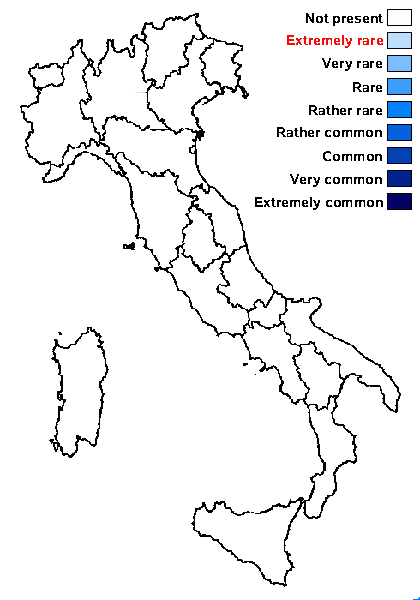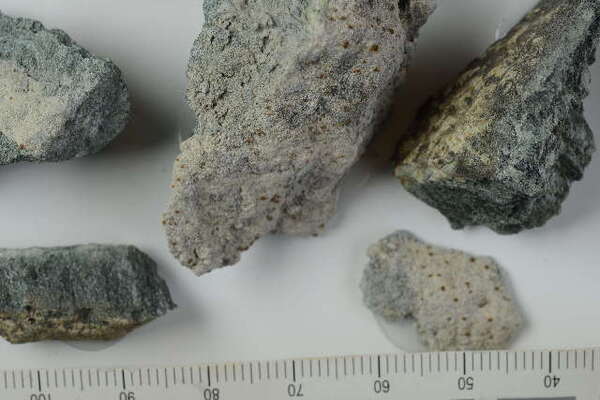Protoblastenia calvella Kainz & Rambold
Bibl. Lichenol., 88: 290, 2004.
Synonyms:
Distribution:
Description: Thallus crustose, usually episubstratic, starting as a thin continuous film, but becoming cracked or even areolate with age, grey to dark brown, sometimes with a greenish hue. Apothecia 0.45-0.85 mm across, scattered or in loose groups, sessile and not constricted at base, initially flat to moderately convex and orange to orange-brown, but soon more or less strongly convex and brown-orange to dark red-brown, without a distinct proper margin. Proper exciple of parallel-radiating hyphae, colourless to yellowish, patchily pigmented; epithecium c. 15 µm high, orange-brown, with granular crystals reacting K+ red; hymenium colourless 75-115 high, hemiamyloid; paraphyses branched and anastomosing, 2.5-4 µm thick, the apical cells slightly swollen, 4-5.5 µm wide; hypothecium colourless, occasionally with small amounts of a pink or brownish pigment. Asci 8-spored, elongate-clavate, with a thin, outer amyloid layer and a thickened tholus penetrated by a tube, the sides of which stain I/KI+ deep blue, Porpidia-type. Ascospores 1-celled, hyaline, broadly ellipsoid to ovoid, 11-14.5 x 6-7 µm, without a distinct perispore. Photobiont chlorococcoid. Spot tests: thallus K-, C-, KC-, P-; apothecia K+ red. Chemistry: apothecia with anthraquinones, mainly parietin. Note: a cryptic species, found on shaded calcareous rocks, so far only known from the Eastern Alps (Austria); to be looked for in the Italian Alps.
Growth form: Crustose
Substrata: rocks
Photobiont: green algae other than Trentepohlia
Reproductive strategy: mainly sexual

Predictive model
Growth form: Crustose
Substrata: rocks
Photobiont: green algae other than Trentepohlia
Reproductive strategy: mainly sexual

Predictive model
 Index Fungorum
Index Fungorum
 GBIF
GBIF


